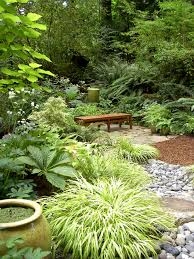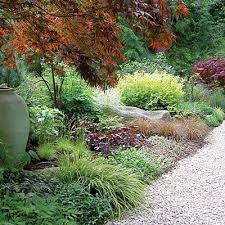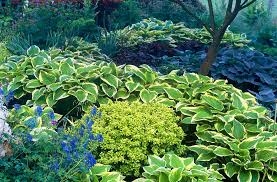
Tree canopies have a lot to do with how much light and moisture enter your garden. If your trees have broad, spreading canopies, they will cast more shade than upright trees, unless these upright trees are planted close together. If these trees are deciduous, the shade they cast will be seasonal and what you can plant beneath them may depend on when they leaf out and how dense their canopies become.

More critical to reducing shade is increasing moisture levels beneath trees. Tree roots extract every drop of moisture from the ground and leave nothing for other plants. A recommended approach to increasing moisture content in the soil is to build a well-draining raised bed and fill it with humus-rich, water retentive soil. Do not place your raised bed against or close to a tree trunk as this would interfere with oxygen availability to tree roots. Install an automatic irrigation system using soaker hoses or drip irrigation rather than a sprinkler system. The use of mulch materials such as bark, wood chips, straw, shredded leaves, even rocks, will help prevent water in the soil from evaporating too quickly.

To keep soil disturbances to a minimum, start with small understory plants. Begin planting at least 12 inches away from the trunk and plant in an outwardly direction. Spacing plants too closely reduces air circulation and encourages fungal diseases like powdery mildew. Avoid nicking tree roots, as you prepare the planting holes. Water the plantings thoroughly. Annually, apply 2 to 3 inches of topdressing such as compost, shredded leaves or well-rotted manure. This organic material replicates nature without damaging tree roots and provides many benefits.
